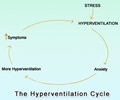Emergency departments across the nation are failing to meet national goals in treating many heart attack and pneumonia patients, according to a study by Johns Hopkins researchers published in the October issue of Academic Emergency Medicine.
In a survey that also found care levels dependent on race, geography and type of health insurance, the investigators studied records of 1,492 heart attack patients and 3,955 pneumonia patients seen at 544 emergency departments between 1998 and 2004. Results showed only 40 percent ED compliance with recommended aspirin therapy and 17 percent with recommended beta blocker treatment of heart attack patients.Only 69 percent of patients with pneumonia got recommended antibiotics, and fewer than half (46 percent) had blood oxygen levels assessed as recommended by the American Thoracic Society.
The Joint Commission regulating hospitals and the Centers for Medicare and Medicaid Services say all eligible heart attack and pneumonia patients presenting to EDs should receive aspirin/beta blocker therapy, or antibiotic and oxygen assessment, respectively.
“If these numbers are applied nationwide, we estimate that as many as 22,000 deaths a year could be prevented in the U.S. if ED caregivers followed practice standards,” said Julius Pham, M.D., principal investigator for the study and assistant professor of medicine in the Johns Hopkins departments of Emergency Medicine and Anesthesiology and Critical Care Medicine.
“More resources should be directed at studying why this is happening and developing strategies to ensure that 100 percent of patients get the recommended treatments.” Also troubling, the Johns Hopkins researchers say, are racial, geographic and financial differences in access to recommended care. Whites were 40 percent more likely to receive aspirin therapy than non-whites, while people going to EDs in the Northeast were 40 percent more likely to receive aspirin than similar patients in the West.
Patients with private insurance were consistently more likely to receive appropriate treatment, while patients seen in government hospitals, either state or county, were consistently less likely to get the optimum care.
Advertisement
“Our findings lend support to the need for meaningful measures of ED performance, such as length of stay and return to ED within 72 hours, and for monitoring to assure improvement,” Pham says.
Advertisement
LIN/V











